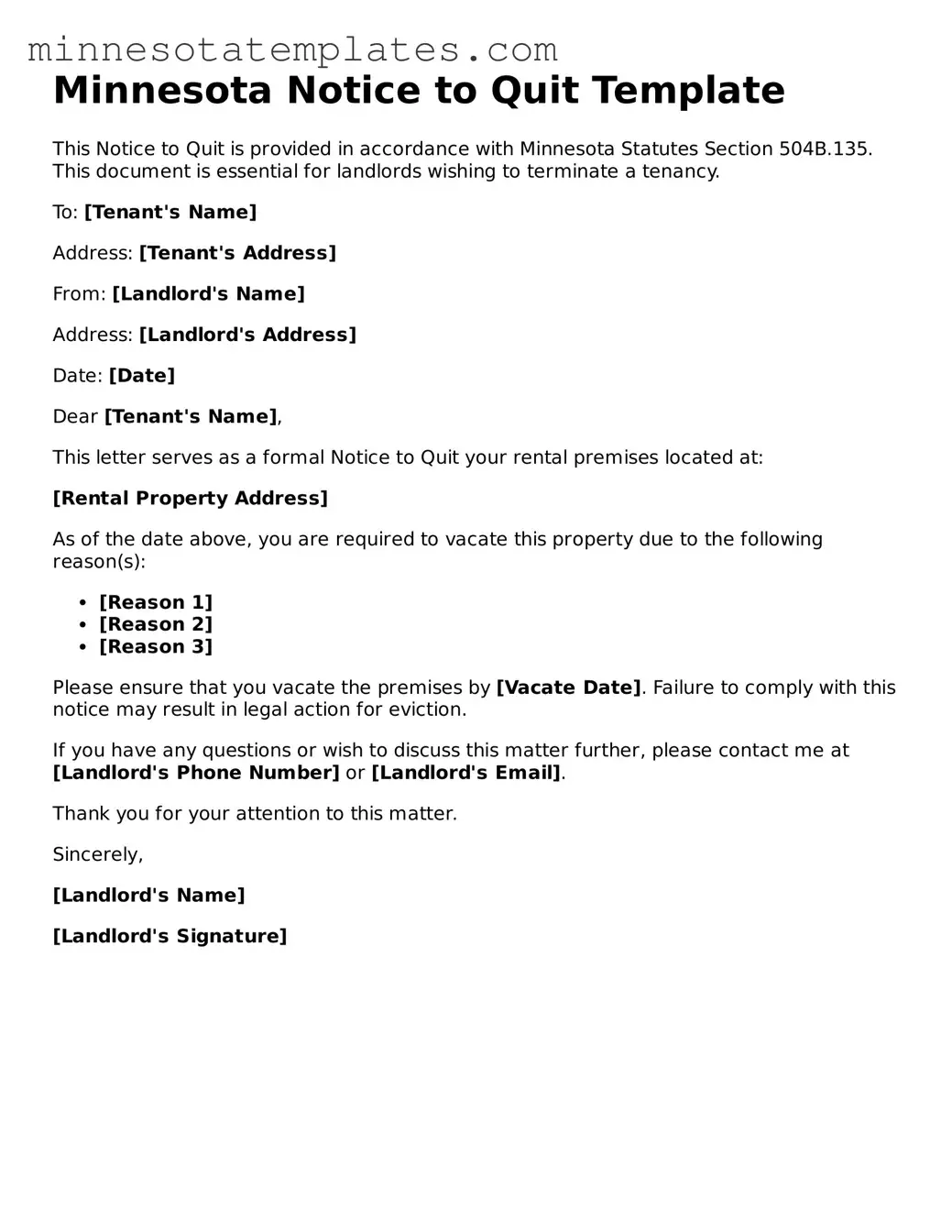Valid Notice to Quit Form for the State of Minnesota
The Minnesota Notice to Quit form is a legal document used by landlords to notify tenants of their intention to terminate a rental agreement. This form outlines the reasons for the eviction and provides the tenant with a specified period to vacate the premises. Understanding this form is crucial for both landlords and tenants, as it helps ensure that the eviction process is conducted fairly and legally. If you need to fill out the form, please click the button below.
Access Your Form Now
